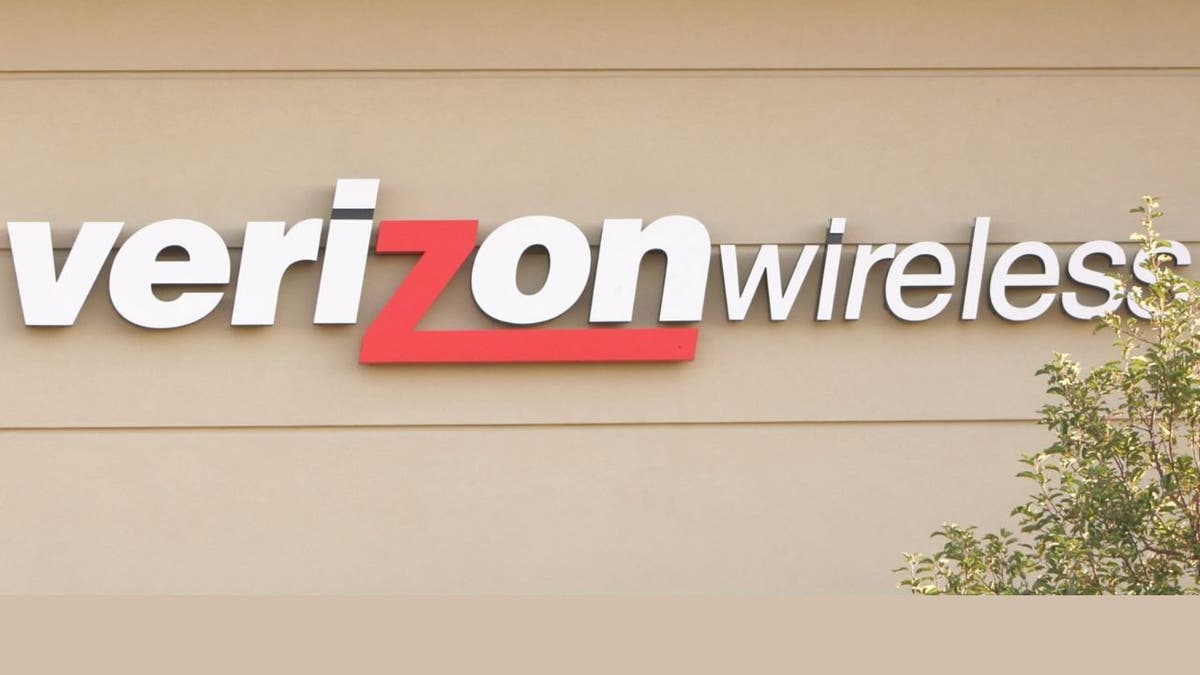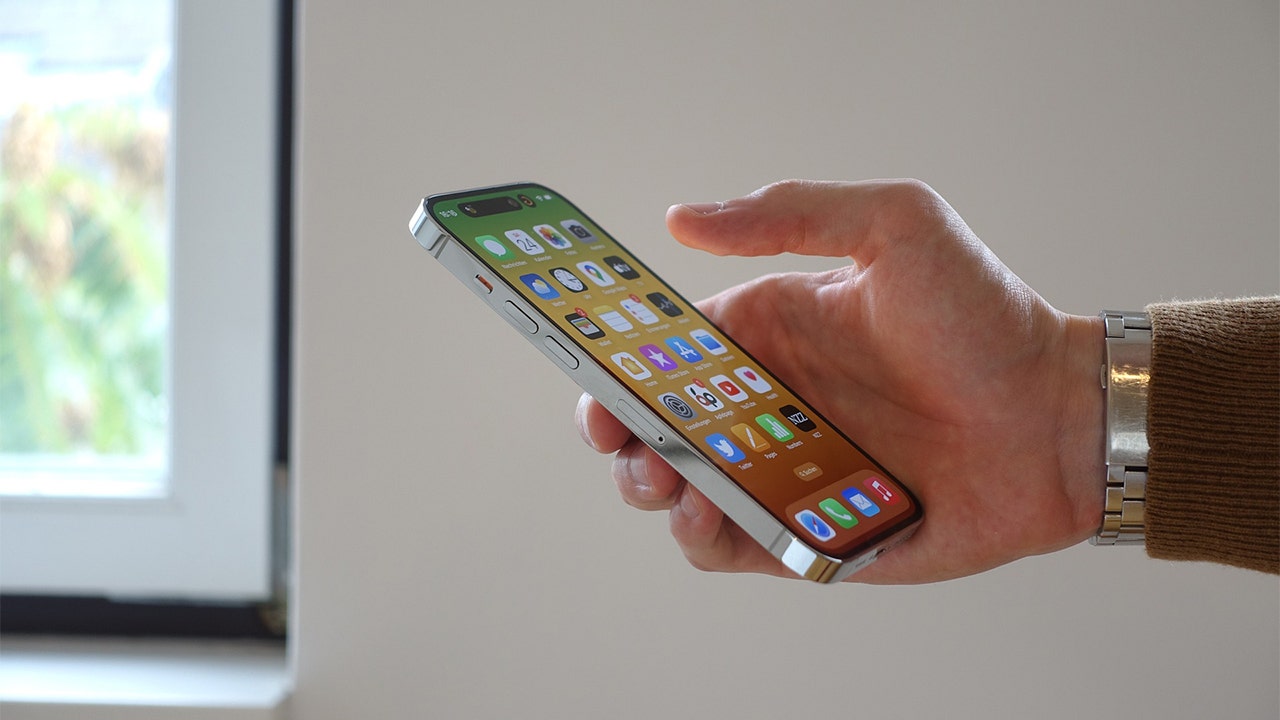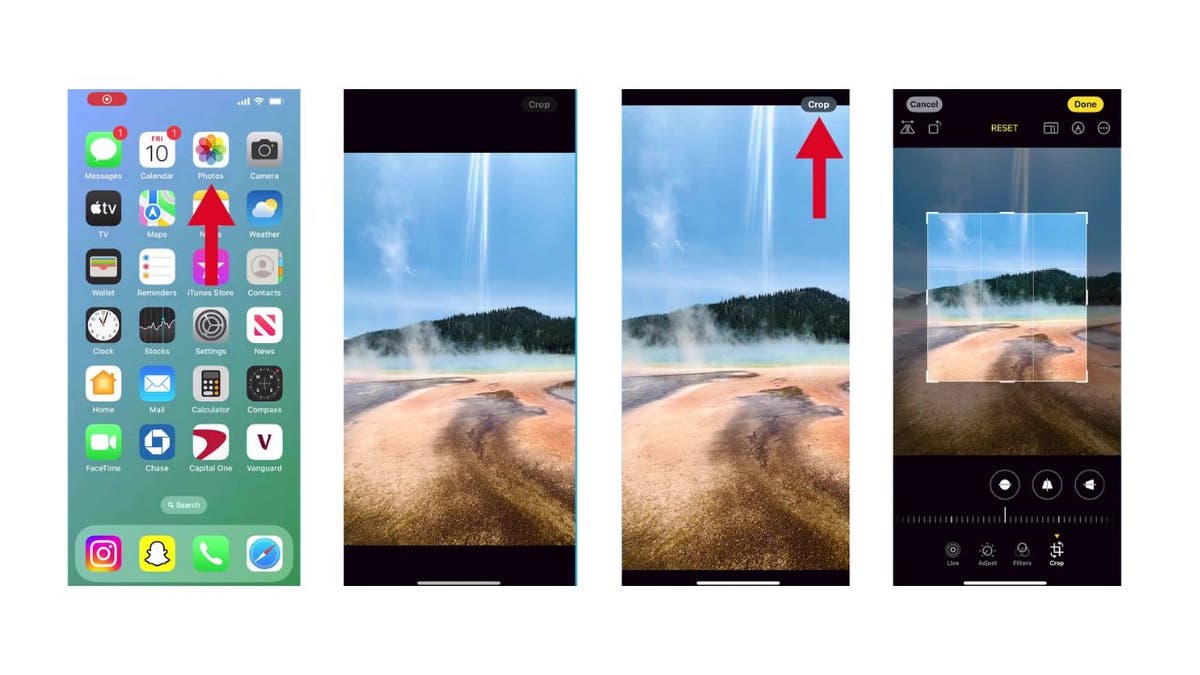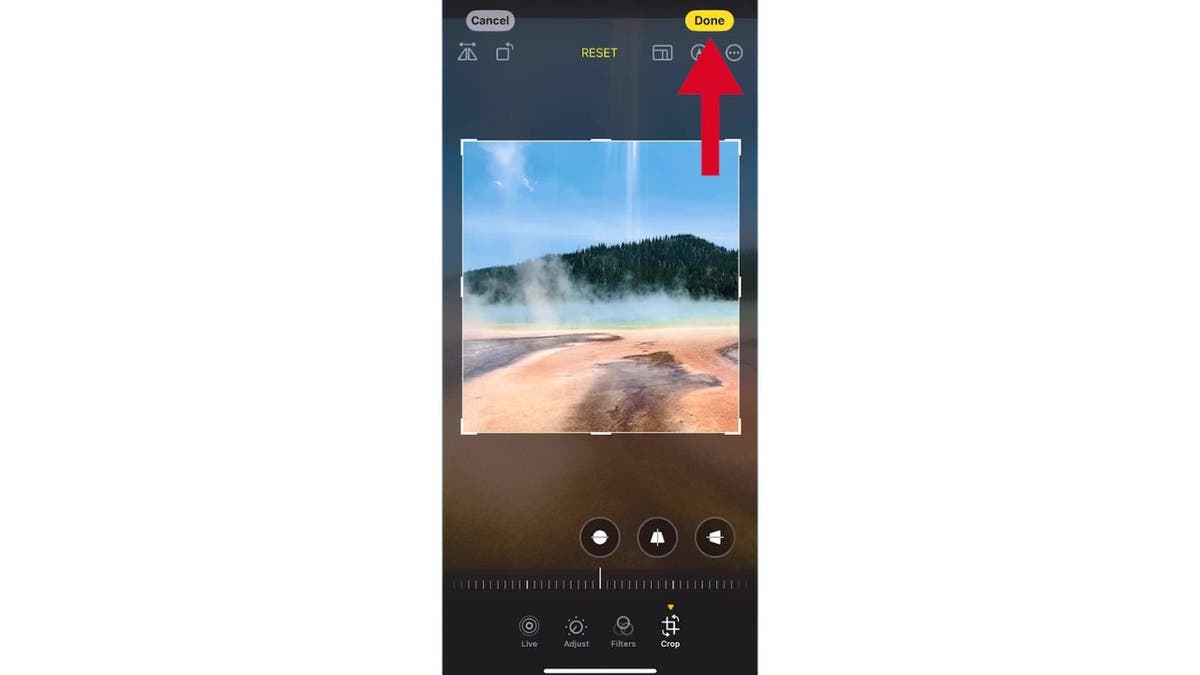Technology
FCC slaps AT&T, Verizon and T-Mobile with mega fines for data deceit

Facebook’s massive data breach
Brett Larson provides insight to Facebook’s major data breach where information for 267 million users was leaked online.
The Federal Communications Commission (FCC) has taken decisive action against the nation’s four largest mobile carriers, imposing a hefty fine of $200 million for the unauthorized sharing of customers’ location data.
This move underscores the agency’s commitment to consumer privacy and protecting sensitive information.
The breakdown of fines
T-Mobile: The leading fine of $80 million reflects the gravity of the alleged breach, compounded by an additional $12 million for its subsidiary, Sprint.
CLICK TO GET KURT’S FREE CYBERGUY NEWSLETTER WITH SECURITY ALERTS, QUICK VIDEO TIPS, TECH REVIEWS AND EASY HOW-TO’S TO MAKE YOU SMARTER
AT&T: With a fine exceeding $57 million, AT&T faces significant repercussions.
Verizon: The carrier was fined $46 million, signaling Verizon’s alleged involvement in the data breach.

Verizon Wireless sign. (Verizon)
MORE: WAYS THE GOVERNMENT IS WATCHING YOU AND WHAT YOU CAN DO TO PROTECT YOUR PRIVACY
Investigation findings and allegations
The FCC’s enforcement bureau alleges that each carrier sold access to customer location data to “aggregators,” who then resold it to third-party service providers. They further allege that this chain of actions occurred without proper customer consent, a clear violation of FCC regulations. The allegations initially brought to light under the Trump administration suggest a failure to safeguard user location data.
THE WORST MALWARE, SECURITY AND PRIVACY BREACHES OF 2023

MORE: FIND OUT WHY CELLPHONE COMPANIES NOW MUST BLOCK OBVIOUS SCAM TEXTS
Legal requirements and carrier obligations
Carriers are mandated by law to protect customer information, including location data. The FCC highlighted the carriers’ “initial failure” to do so, even after being aware that their safeguards were ineffective.
The FCC’s stance
FCC Chair Jessica Rosenworcel emphasized the sensitivity of real-time location information and the carriers’ failure to act as responsible stewards of this data. The FCC’s resolve remains firm in holding carriers accountable, and she had this to say in a statement:
“Our communications providers have access to some of the most sensitive information about us. These carriers failed to protect the information entrusted to them. Here, we are talking about some of the most sensitive data in their possession: customers’ real-time location information, revealing where they go and who they are. As we resolve these cases — which were first proposed by the last Administration — the Commission remains committed to holding all carriers accountable and making sure they fulfill their obligations to their customers as stewards of this most private data.”
The mobile carriers’ stance
However, the mobile carriers are not standing down and intend to challenge the FCC’s decision.
An AT&T spokesperson said in a statement:
“The FCC order lacks both legal and factual merit. It unfairly holds us responsible for another company’s violation of our contractual requirements to obtain consent, ignores the immediate steps we took to address that company’s failures, and perversely punishes us for supporting life-saving location services like emergency medical alerts and roadside assistance that the FCC itself previously encouraged. We expect to appeal the order after conducting a legal review.”
Meanwhile, T-Mobile had this to say:
“This industry-wide third-party aggregator location-based services program was discontinued more than five years ago after we took steps to ensure that critical services like roadside assistance, fraud protection and emergency response would not be disrupted. We take our responsibility to keep customer data secure very seriously and have always supported the FCC’s commitment to protecting consumers, but this decision is wrong, and the fine is excessive. We intend to challenge it.”
Verizon spokesman Rich Young offered this response:
“Verizon is deeply committed to protecting customer privacy. In this case, when one bad actor gained unauthorized access to information relating to a very small number of customers, we quickly and proactively cut off the fraudster, shut down the program, and worked to ensure this couldn’t happen again. Unfortunately, the FCC’s order gets it wrong on both the facts and the law, and we plan to appeal this decision.
“Keep in mind, the FCC’s order concerns an old program that Verizon shut down more than half a decade ago. That program required affirmative, opt-in customer consent and was intended to support services like roadside assistance and medical alerts.”
MORE: AT&T DATA LEAK FROM 73 MILLION CUSTOMERS — WHAT YOU NEED TO DO NEXT
Can I do anything to ensure I’m not sharing my location?
You can check that you’re not accidentally sharing your location by clicking here. While following the tips in our article would likely enhance your privacy settings and reduce the risk of unauthorized location sharing by apps and services on your devices, it may not have prevented carriers like AT&T, Verizon and T-Mobile from sharing location data in the manner described by the FCC’s allegations.
The issue at hand involved the carriers’ practices of selling access to customer location data to aggregators, which is a separate matter from the location settings on your device. The carriers were fined for not obtaining proper customer consent and not safeguarding the data as per FCC regulations, which is a different aspect of privacy protection than what is controlled through device settings.
MORE: TOP AFFORDABLE CELLPHONE PLANS
Steps you can take to protect your privacy
In response to the FCC’s action against mobile carriers for unauthorized sharing of location data, you can take several steps to protect yourself and enhance your privacy:
1. Understand your rights: Know what your rights are regarding data privacy and how carriers are supposed to protect your information.
2. Review privacy policies: Regularly review the privacy policies of your mobile carrier and any apps you use to understand how your data is being used.
3. Manage app permissions: Be vigilant about the permissions you grant to apps, especially regarding location data. Only allow access to apps that need it for core functionality.
4. Opt-out of data sharing: If your carrier provides the option, opt out of any data-sharing initiatives.
5. Contact your carrier: If you have concerns about how your data is being handled, contact your carrier directly to express your concerns and request more information about their data protection measures.
6. Stay proactive: Regularly update your device’s security settings and stay proactive about protecting your personal information.
7. Use privacy tools: Consider using privacy-focused tools and services, such as VPNs, which can help mask your location from third parties. A VPN can protect you against being tracked and identify your potential location on websites you visit. Depending on their privacy settings, many sites can read your IP address and may display the city from which you are corresponding. A VPN will disguise your IP address to show an alternate location. See my expert review of the best VPNs for browsing the web privately on your Windows, Mac, Android and iOS devices.
Kurt’s key takeaways
The FCC’s actions serve as a reminder of the sanctity of personal data. In an era where information is power, protecting customer data is paramount. The fines imposed are not just monetary penalties but a call to action for all service providers to uphold the trust placed in them by consumers. As the carriers prepare to appeal, the industry watches closely, knowing that the outcome of this case could set a precedent for data privacy and protection standards moving forward.
In light of the FCC’s recent fines for unauthorized sharing of location data, what measures do you believe mobile carriers should implement to ensure the privacy and trust of their customers? Let us know by writing us at Cyberguy.com/Contact
For more of my tech tips & security alerts, subscribe to my free CyberGuy Report Newsletter by heading to Cyberguy.com/Newsletter
Ask Kurt a question or let us know what stories you’d like us to cover.
Answers to the most-asked CyberGuy questions:
Copyright 2024 CyberGuy.com. All rights reserved.

Technology
Microsoft Bing issue takes down Copilot, DuckDuckGo, and ChatGPT search features
/cdn.vox-cdn.com/uploads/chorus_asset/file/25461351/image__13_.png)
Search capabilities for ChatGPT, Copilot, DuckDuckGo, and other platforms aren’t working properly right now due to a Microsoft outage that appears to be related to the Bing application programming interface (API). Sites and services are either completely unavailable or only intermittently responding at the time of publication.
The issues — which began around 3AM ET — appear to be linked to Bing’s API and any service that relies upon it. While Microsoft’s own web search engine Bing was also seemingly affected earlier, according to Techcrunch, the service now appears to be correctly loading search results.
Other search engines like DuckDuckGo and Ecosia, which rely on Bing’s API, are unable to load any search results. Microsoft’s Copilot is also experiencing similar issues, displaying a loading loop that prevents users from accessing the service. ChatGPT, which allows Plus subscribers to perform web searches, is similarly displaying an error message when users attempt to make a search enquiry.
Microsoft has acknowledged the loading issues with its Copilot service, saying it’s “working to isolate the cause of the issue.” Meanwhile, Microsoft’s service health platform doesn’t flag any other service outages currently. OpenAI and Ecosia have confirmed that they are experiencing issues with their platform’s search features, and OpenAI says it’s also investigating the issue.
This story is developing…
Technology
Make your bad photos look picture-perfect like a pro in seconds

Cropping photos in iOS 17 has become a breeze. Gone are the days of the multistep process that tested your patience.
Now, with the latest update, iOS 17 streamlines the process, allowing you to crop your photos quickly and efficiently.
Screen to adjust photos on iPhone (Apple)
Editing photos with iOS 17: A one-tap wonder
Editing photos on your iPhone is now simpler than ever. With iOS 17, all it takes is one tap to start editing your photos.
BEST ACCESSORIES FOR YOUR PHONE
Here’s how to crop, rotate or flip your photos
- Open the Photos app on your iPhone.
- Choose a photo that you want to crop.
- Zoom in on the photo if needed. To zoom in on the image, use a pinch-out gesture on the screen. Place two fingers close together on the photo itself and spread them apart. Keep spreading your fingers until you’ve zoomed in enough to focus on the desired area of the photo. This will allow you to examine finer details and make precise cropping adjustments.
- Press the crop button in the top right corner of your screen.
NORTH CAROLINA POLICE WARN FAKE MICROSOFT EMPLOYEES GOING INTO PEOPLE’S HOMES, STEALING FROM COMPUTERS

Steps to crop your phone on iPhone (Kurt “CyberGuy” Knutsson)
- Utilize the full crop menu to adjust the aspect ratio, Flip, Rotate or Straighten your photo.
- To flip, tap the triangle to flip the image horizontally.
- To rotate, tap the square with an arrow over it to rotate the photo 90 degrees.
- To straighten, use the slider to adjust the photo’s angle until you achieve the desired alignment.
GET SECURITY ALERTS, EXPERT TIPS – SIGN UP FOR KURT’S NEWSLETTER – THE CYBERGUY REPORT HERE

Steps to flip, rotate or straighten your photos on iPhone (Kurt “CyberGuy” Knutsson)
- Tap Done to save your edits, or if you don’t like your changes, tap Cancel, then tap Discard Changes.

Steps to crop your photos (Kurt “CyberGuy” Knutsson)
ASK ANY TECH QUESTION AND GET KURT’S FREE CYBERGUY REPORT NEWSLETTER HERE
Undo and redo edits
As you edit a photo, tap undo and redo at the top of the screen to undo and redo multiple edit steps.
THE SECRET MEANING OF YOUR IPHONE CLOCKS 4 COLORS
Kurt’s key takeaways
The introduction of one-tap photo cropping in iOS 17 is a significant leap forward in user convenience. This feature not only saves time but also makes photo editing accessible to everyone. Whether you’re a professional photographer or someone who loves capturing moments, the new iOS 17 ensures that your memories are just a tap away from perfection.
With the ease of use provided by iOS 17’s photo editing features, do you see yourself editing photos more often, why or why not? Let us know by writing us at Cyberguy.com/Contact.
For more of my tech tips and security alerts, subscribe to my free CyberGuy Report Newsletter by heading to Cyberguy.com/Newsletter.
Ask Kurt a question or let us know what stories you’d like us to cover.
Follow Kurt on Facebook, YouTube and Instagram.
Answers to the most asked CyberGuy questions:
Copyright 2024 CyberGuy.com. All rights reserved.
Technology
NASA’s Psyche mission fires up its futuristic electric engines
/cdn.vox-cdn.com/uploads/chorus_asset/file/25460661/Psyche_ion_thruster.png)
NASA has turned on the electric Hall thrusters of Psyche, a spacecraft that’s now gently motoring toward a metal-rich asteroid embedded in the main asteroid belt beyond Mars. The agency says Psyche is in “full cruise” mode now, six months after launching on October 13th, 2023, on a conventional, SpaceX rocket.
On the way, NASA used Psyche to test laser-based deep space communications. The craft shot a communications laser back at the Earth from close to 10 million miles out, which is a first for NASA. It’s expected to reach its target and namesake, the Psyche asteroid, by 2029 and will orbit it for two years, observing and sending data back to NASA. Scientists suspect Psyche is actually the beginning core of a planet, also called a planetesimal.
Ion propulsion is both relatively new and pretty old for NASA. The agency has been working on the tech since before US astronauts first flew to the Moon, having test-fired its first ion thruster in 1964. They also have no moving parts; instead, they generate thrust by exciting xenon particles, pushing them out of the thruster. You can read more about them in this NASA paper (PDF) describing ion propulsion.
There are lots of different kinds of ion propulsion, including the magnetic Hall thrusters used by Psyche. In 2018, Psyche’s Spacecraft Chief Engineer wrote this detailed explanation of the differences between those and other ion thrusters, as well as other kinds like arc jets and microwave thrusters.
NASA first used ion propulsion as a spacecraft’s main propulsion for 1998’s Deep Space 1, a mission specifically conducted to test “various advanced technologies for future interplanetary missions.” In 2007, Dawn became NASA’s “first exclusively science-focused” mission to use ion thrusters, flying until it ran out of hydrazine, the fuel it used for its orientation thrusters. Without those, it couldn’t turn itself back to maintain communication with NASA
Ion propulsion isn’t powerful enough to launch a rocket from Earth, but they can still reach very high speeds over time. Right now, NASA says Psyche is traveling at 23 miles per second, or about 84,000mph, and will eventually reach 124,000mph. Thrusters like Psyche’s are generally useful because the lack of moving parts makes them durable, and they use less fuel, so they’re lighter and can be used on smaller spacecraft. Plus, they look cool when they’re turned on.
-

 World1 week ago
World1 week agoPro-Palestinian university students in the Netherlands uphold protest
-

 Politics1 week ago
Politics1 week agoReports of Biden White House keeping 'sensitive' Hamas intel from Israel draws outrage
-

 Politics1 week ago
Politics1 week agoSouthern border migrant encounters decrease slightly but gotaways still surge under Biden
-

 Politics1 week ago
Politics1 week agoWhite House walks diplomatic tightrope on Israel amid contradictory messaging: 'You can't have it both ways'
-

 World1 week ago
World1 week agoSlovakia PM Robert Fico in ‘very serious’ condition after being shot
-

 Politics1 week ago
Politics1 week agoDem newcomer aims for history with primary win over wealthy controversial congressman
-

 Politics1 week ago
Politics1 week agoJill Biden tells Arizona college graduates 'community colleges should be free in America'
-

 News1 week ago
News1 week agoDespite state bans, abortions nationwide are up, driven by telehealth















